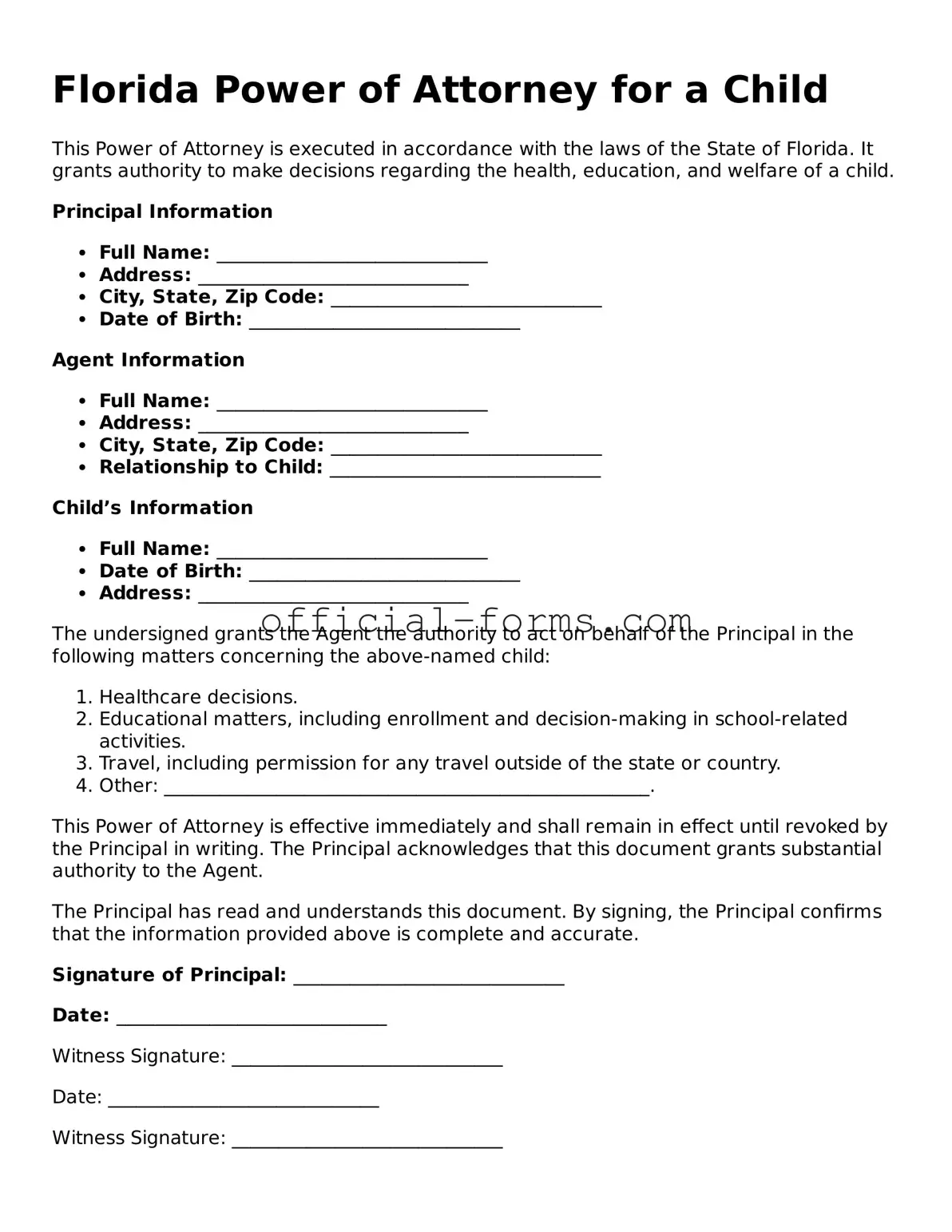When it comes to granting someone the authority to make decisions on behalf of a child, the Florida Power of Attorney for a Child form serves as a crucial tool. However, many individuals inadvertently make mistakes while filling out this important document. Understanding these common pitfalls can help ensure that the form is completed correctly and that the intended authority is granted without complications.
One frequent error occurs when parents or guardians fail to specify the scope of authority granted to the agent. It is essential to clearly outline what decisions the agent can make. Without this clarity, the agent may not have the necessary power to act in specific situations, leading to confusion and potential disputes. For instance, if medical decisions are not explicitly included, the agent may be unable to consent to necessary treatments, which could jeopardize the child's well-being.
Another common mistake is neglecting to include the necessary signatures. Both the parent or guardian granting the power and the agent must sign the form for it to be valid. Additionally, some may overlook the requirement for a witness or notary signature, depending on the circumstances. Failing to gather all required signatures can render the document ineffective, leaving the child without the intended support.
Moreover, individuals often forget to update the Power of Attorney when circumstances change. Life is dynamic; relationships can evolve, and new guardians may be needed. If the form is not revised to reflect current realities, the authority granted may no longer align with the family’s needs. This oversight can lead to complications if the original agent is unavailable or unsuitable at the time the power needs to be exercised.
Another significant error involves the lack of attention to detail in filling out the form. Mistakes such as misspelling names, incorrect dates, or incomplete information can create challenges. These inaccuracies might raise questions about the legitimacy of the document, potentially leading to legal disputes or delays in decision-making when it matters most.
Lastly, some individuals underestimate the importance of understanding the implications of the Power of Attorney. It is not merely a formality; it carries significant responsibilities and legal consequences. Those granting authority should fully comprehend what they are permitting and the potential impact on their child’s life. Engaging in discussions with the agent about expectations and responsibilities can mitigate misunderstandings and ensure a smoother process.
